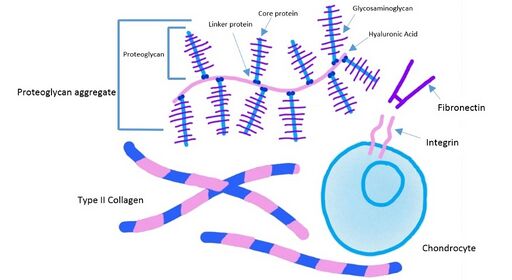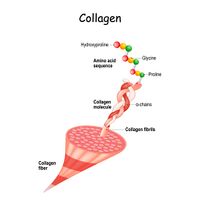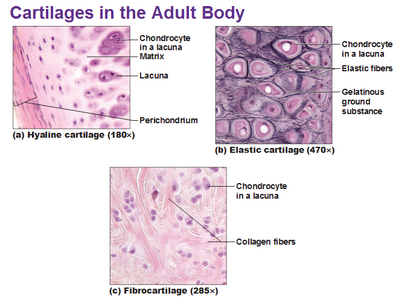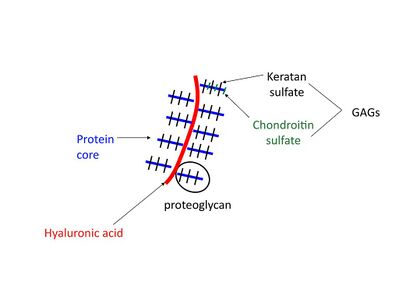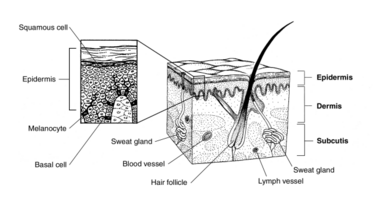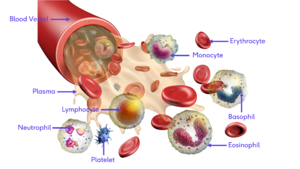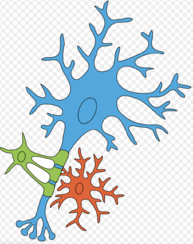Extracellular Matrix: Difference between revisions
No edit summary |
No edit summary |
||
| (15 intermediate revisions by 2 users not shown) | |||
| Line 5: | Line 5: | ||
</div> | </div> | ||
== Introduction == | == Introduction == | ||
The extracellular matrix (ECM) | [[File:Extracellular Matrix Components of Cartilage.jpeg|thumb|ECM components of cartilage |alt=|512x512px]] | ||
The connective tissues non cellular portion is known as the extracellular matrix (ECM), giving the physical scaffolding for the cells. The ECM is able to hold water, provide appropriate hydration of the tissue and form part of a selective barrier to the external environment. The ECM also initiates crucial biochemical and biomechanical cues for tissue morphogenesis, differentiation and homeostasis<ref>Simona Pompili, Giovanni Latella, '''Eugenio Gaudio,''' Roberta Sferra'''and''' Antonella Vetuschi The Charming World of the Extracellular Matrix: A Dynamic and Protective Network of the Intestinal Wall Available: https://www.frontiersin.org/articles/10.3389/fmed.2021.610189/full (accessed 28.6.2022)</ref><ref>Christian Frantz,Kathleen M. Stewart,Valerie M. Weaver The extracellular matrix at a glance Available: https://journals.biologists.com/jcs/article/123/24/4195/31378/The-extracellular-matrix-at-a-glance (accessed 28.7.2022)</ref>. | |||
In human, the main components of the extracellular matrix are: | In human, the main components of the extracellular matrix are: | ||
| Line 11: | Line 12: | ||
# Fibrous elements (e.g. [[collagen]], elastin, reticulin), | # Fibrous elements (e.g. [[collagen]], elastin, reticulin), | ||
# Link proteins (e.g. fibronectin, laminin), and | # Link proteins (e.g. fibronectin, laminin), and | ||
# Space filling molecules (e.g. [[proteoglycans]], glycosaminoglycans)<ref>Biology on line Extracellular matrix Available: https://www.biologyonline.com/dictionary/extracellular-matrix (accessed 28.6.22)</ref> | # Space filling molecules (e.g. [[proteoglycans]], glycosaminoglycans)<ref name=":0">Biology on line Extracellular matrix Available: https://www.biologyonline.com/dictionary/extracellular-matrix (accessed 28.6.22)</ref> | ||
== | == Various Roles of ECM == | ||
The role of the ECM depends on its nature and composition. eg, the matrix may be mineralised in bone to resist compression or dominated by tension resisting collagen fibres in | The role of the ECM depends on its nature and composition. eg, the matrix may be mineralised in [[bone]] to resist compression or dominated by tension resisting collagen fibres in [[Tendon Anatomy|tendons]]. Below various examples are given. | ||
=== Tendon === | === Tendon === | ||
[[File:Collagen image shutterstock 1807269727.jpg|right|frameless|200x200px]] | |||
The ECM of tendon is composed predominantly of collagen, which accounts for ~ 60–85% of the dry weight of the tissue. Approximately 95% of the collagen is type I. The collagen provides excellent mechanical strength to the tendon along one axis! allowing them to be able to withstand tension.<ref>H.R.C. Screen, D.E. Birk, [...], and M.F. Young Tendon Functional Extracellular Matrix Available: https://www.ncbi.nlm.nih.gov/pmc/articles/PMC4507431/ (accessed 28.6.2022)</ref> | The ECM of tendon is composed predominantly of collagen, which accounts for ~ 60–85% of the dry weight of the tissue. Approximately 95% of the collagen is type I. The collagen provides excellent mechanical strength to the tendon along one axis! allowing them to be able to withstand tension.<ref>H.R.C. Screen, D.E. Birk, [...], and M.F. Young Tendon Functional Extracellular Matrix Available: https://www.ncbi.nlm.nih.gov/pmc/articles/PMC4507431/ (accessed 28.6.2022)</ref> | ||
=== Cartilage === | === Cartilage === | ||
Chondrocytes synthesise the cartilage | [[File:Three-types-of-cartilage-hyaline-elastic-and-fibrocartilage.png|right|frameless|alt=|396x396px]] | ||
Chondrocytes synthesise the [[cartilage]] ECM and makes it both stiff and elastic. | |||
# Mainly composed of type II collagen, up to 25 % of dry weight, with types IX and XI collagens present in lower proportions. | # Mainly composed of type II collagen, up to 25 % of dry weight, with types IX and XI collagens present in lower proportions. | ||
| Line 28: | Line 31: | ||
== Bone == | == Bone == | ||
Osteoblasts synthesise bone | [[File:Glycosaminoglycans2.jpeg|thumb|399x399px|Glycosaminoglycans]] | ||
Osteoblasts synthesise bone ECM. Consists of: | |||
# Type I collagen mixed with a matrix of calcium phosphate crystal (which is up to 70 % of the dry weight). Collagen allows bone to be elastic enough to avoid bone fragility and not to be easily broken whilst calcium phosphate crystal provides stiffness and hardness. | # Type I collagen mixed with a matrix of calcium phosphate crystal (which is up to 70 % of the dry weight). Collagen allows bone to be elastic enough to avoid bone fragility and not to be easily broken whilst calcium phosphate crystal provides stiffness and hardness. | ||
# Proteoglcans and glycoproteins, which are less abundant, but vital for the organization of collagen fibers, mineralization and resorption of bone. Chondroitin sulfate accounts for 67-97 % of the bone glycosaminoglycans.<ref>Mmegias ECM Available: https://mmegias.webs.uvigo.es/02-english/5-celulas/2-tipos_mat_met.php (accessed 28.6.2022)</ref> | # Proteoglcans and glycoproteins, which are less abundant, but vital for the organization of collagen fibers, mineralization and resorption of bone. Chondroitin sulfate accounts for 67-97 % of the bone glycosaminoglycans.<ref>Mmegias ECM Available: https://mmegias.webs.uvigo.es/02-english/5-celulas/2-tipos_mat_met.php (accessed 28.6.2022)</ref> | ||
== Skin == | |||
[[File:Skin layers.gif|thumb|374x374px|Skin layers]] | |||
The ECM of [[skin]] is composed of various polysaccharides, water and collagen proteins, giving the skin its unique properties, ie great tensile strength of plus substantial elasticity and compressibility. The ECM molecules, which are secreted by fibroblasts and epidermal cells, are importantly. | |||
* Fibrous structural [[proteins]], eg collagens, elastin and laminin, which give the ECM strength and resilience | |||
* Proteoglycans, eg dermatan sulfate and hyaluronan, which are large, highly hydrated molecules that help cushion cells in the ECM<ref>World wide wounds ECM Available: http://www.worldwidewounds.com/2005/august/Schultz/Extrace-Matric-Acute-Chronic-Wounds.html (accessed 29.6.2022)</ref>. | |||
== Blood == | == Blood == | ||
The extracellular matrix of blood is called plasma, making blood unique among connective | [[File:Blood with description.png|right|frameless]] | ||
The extracellular matrix of [[Blood Physiology|blood]] is called plasma, making blood unique among [[Connective Tissue|connective tissue]]<nowiki/>s because it is fluid. This fluid, which is mostly water, suspends the formed elements and enables them to circulate throughout the body within the cardiovascular system. | |||
== Nervous Tissue == | == Nervous Tissue == | ||
Macroglia | [[File:Glial cells.png|thumb|Glial cells, neuron blue |alt=|244x244px]] | ||
[[Glial Cells|Macroglia]] provide most of the the ECM in the nervous system, with the ECM playing an important role in supporting and signaling. ECM components are key mediators of glial activation and have the capacity to evoke both regenerative and degenerative effects on glia and [[Neurone|neurons]]. The production of ECM components changes drastically during reactive gliosis, a reaction that happens in response to nervous tissue damage. There is only a small amount of extracellular matrix in the nervous tissue.<ref>Elena Vecino and Jessica C. F. Kwok The Extracellular Matrix in the Nervous System: The Good and the Bad Aspects Available:https://www.intechopen.com/chapters/50300 (accessed 28.6.2022)</ref> | |||
== Clinical Implication of ECM and Physiotherapy Practice == | |||
While Knowledge of ECM is important to physiotherapy, its clinical application in manual therapy and wound healing cannot be overemphasized. The ECM components of clinical significance to physiotherapists include | |||
# Glycosaminoglycans, GAGs, (named proteoglycans when attached to a protein core) | |||
# Glycoprotein | |||
# Fibrous proteins | |||
Some important examples of the ECMs relevance include: | |||
# | # ECM is motion-dependent (ECM requires a motion for its production) | ||
# | # Half-life of GAGs and Proteoglycans is between 1,7 to 7 days. | ||
# Isometric contraction at an early stage of rehabilitation of patients with pain-induced splinting is essential to keep dense connective tissue lubricated. | |||
# In a period greater than a month, loss of weight-bearing and movement on joint may reduce proteoglycans by 40% | |||
# Hyaluronan or hyaluronic acid is a form of GAGs that is responsible for resisting mechanical stress within cartilage and a good presence of it also aids in wound healing. | |||
# In the final stage of tendon healing (the remodeling phase), the fibrous protein, collagen I, synthesis dominates, and the ECM becomes more aligned. This is an important time to apply appropriate loads to the new tissue. See more on [[Tendon Physiology]]. This phase begins 1–2 months after injury, continuing potentially for more than a year. This repaired tissue appears scar-like, never completely regaining the biomechanical properties it had prior to injury.<ref>Pramod B. Voleti,* Mark R. Buckley,* and Louis J. Soslowsky Tendon Healing: Repair and Regeneration Available: https://www.annualreviews.org/doi/10.1146/annurev-bioeng-071811-150122 (accessed 30.6.2022)</ref> <ref>Darlene Hertling, Randolph Kessler. Management of Common Musculoskeletal Disorders, Physical Therapy Principles and Methods, JB Lippincott, Philadelphia (1990), 679 pp. $39.95.</ref>. | |||
== Conclusion == | |||
As shown above, the ECM is also a reservoir of bioactive molecules, being a highly dynamic entity that is of great importance, determining and controlling the most fundamental behaviours and characteristics of cells such as proliferation, adhesion, migration, polarity, differentiation, and [[apoptosis]].<ref name=":0" /> | |||
== References == | == References == | ||
Latest revision as of 06:32, 30 June 2022
Original Editor - Lucinda hampton
Top Contributors - Lucinda hampton and Tolulope Adeniji
Introduction[edit | edit source]
The connective tissues non cellular portion is known as the extracellular matrix (ECM), giving the physical scaffolding for the cells. The ECM is able to hold water, provide appropriate hydration of the tissue and form part of a selective barrier to the external environment. The ECM also initiates crucial biochemical and biomechanical cues for tissue morphogenesis, differentiation and homeostasis[1][2].
In human, the main components of the extracellular matrix are:
- Fibrous elements (e.g. collagen, elastin, reticulin),
- Link proteins (e.g. fibronectin, laminin), and
- Space filling molecules (e.g. proteoglycans, glycosaminoglycans)[3]
Various Roles of ECM[edit | edit source]
The role of the ECM depends on its nature and composition. eg, the matrix may be mineralised in bone to resist compression or dominated by tension resisting collagen fibres in tendons. Below various examples are given.
Tendon[edit | edit source]
The ECM of tendon is composed predominantly of collagen, which accounts for ~ 60–85% of the dry weight of the tissue. Approximately 95% of the collagen is type I. The collagen provides excellent mechanical strength to the tendon along one axis! allowing them to be able to withstand tension.[4]
Cartilage[edit | edit source]
Chondrocytes synthesise the cartilage ECM and makes it both stiff and elastic.
- Mainly composed of type II collagen, up to 25 % of dry weight, with types IX and XI collagens present in lower proportions.
- The second most abundant molecules are glycosaminoglycans, such as hyaluronan and aggrecan, which join together to form macromolecular complexes.
Collagen counteracts tensile loads and glycosaminoglycans decrease the mechanical pressures.
Bone[edit | edit source]
Osteoblasts synthesise bone ECM. Consists of:
- Type I collagen mixed with a matrix of calcium phosphate crystal (which is up to 70 % of the dry weight). Collagen allows bone to be elastic enough to avoid bone fragility and not to be easily broken whilst calcium phosphate crystal provides stiffness and hardness.
- Proteoglcans and glycoproteins, which are less abundant, but vital for the organization of collagen fibers, mineralization and resorption of bone. Chondroitin sulfate accounts for 67-97 % of the bone glycosaminoglycans.[5]
Skin[edit | edit source]
The ECM of skin is composed of various polysaccharides, water and collagen proteins, giving the skin its unique properties, ie great tensile strength of plus substantial elasticity and compressibility. The ECM molecules, which are secreted by fibroblasts and epidermal cells, are importantly.
- Fibrous structural proteins, eg collagens, elastin and laminin, which give the ECM strength and resilience
- Proteoglycans, eg dermatan sulfate and hyaluronan, which are large, highly hydrated molecules that help cushion cells in the ECM[6].
Blood[edit | edit source]
The extracellular matrix of blood is called plasma, making blood unique among connective tissues because it is fluid. This fluid, which is mostly water, suspends the formed elements and enables them to circulate throughout the body within the cardiovascular system.
Nervous Tissue[edit | edit source]
Macroglia provide most of the the ECM in the nervous system, with the ECM playing an important role in supporting and signaling. ECM components are key mediators of glial activation and have the capacity to evoke both regenerative and degenerative effects on glia and neurons. The production of ECM components changes drastically during reactive gliosis, a reaction that happens in response to nervous tissue damage. There is only a small amount of extracellular matrix in the nervous tissue.[7]
Clinical Implication of ECM and Physiotherapy Practice[edit | edit source]
While Knowledge of ECM is important to physiotherapy, its clinical application in manual therapy and wound healing cannot be overemphasized. The ECM components of clinical significance to physiotherapists include
- Glycosaminoglycans, GAGs, (named proteoglycans when attached to a protein core)
- Glycoprotein
- Fibrous proteins
Some important examples of the ECMs relevance include:
- ECM is motion-dependent (ECM requires a motion for its production)
- Half-life of GAGs and Proteoglycans is between 1,7 to 7 days.
- Isometric contraction at an early stage of rehabilitation of patients with pain-induced splinting is essential to keep dense connective tissue lubricated.
- In a period greater than a month, loss of weight-bearing and movement on joint may reduce proteoglycans by 40%
- Hyaluronan or hyaluronic acid is a form of GAGs that is responsible for resisting mechanical stress within cartilage and a good presence of it also aids in wound healing.
- In the final stage of tendon healing (the remodeling phase), the fibrous protein, collagen I, synthesis dominates, and the ECM becomes more aligned. This is an important time to apply appropriate loads to the new tissue. See more on Tendon Physiology. This phase begins 1–2 months after injury, continuing potentially for more than a year. This repaired tissue appears scar-like, never completely regaining the biomechanical properties it had prior to injury.[8] [9].
Conclusion[edit | edit source]
As shown above, the ECM is also a reservoir of bioactive molecules, being a highly dynamic entity that is of great importance, determining and controlling the most fundamental behaviours and characteristics of cells such as proliferation, adhesion, migration, polarity, differentiation, and apoptosis.[3]
References[edit | edit source]
- ↑ Simona Pompili, Giovanni Latella, Eugenio Gaudio, Roberta Sferraand Antonella Vetuschi The Charming World of the Extracellular Matrix: A Dynamic and Protective Network of the Intestinal Wall Available: https://www.frontiersin.org/articles/10.3389/fmed.2021.610189/full (accessed 28.6.2022)
- ↑ Christian Frantz,Kathleen M. Stewart,Valerie M. Weaver The extracellular matrix at a glance Available: https://journals.biologists.com/jcs/article/123/24/4195/31378/The-extracellular-matrix-at-a-glance (accessed 28.7.2022)
- ↑ 3.0 3.1 Biology on line Extracellular matrix Available: https://www.biologyonline.com/dictionary/extracellular-matrix (accessed 28.6.22)
- ↑ H.R.C. Screen, D.E. Birk, [...], and M.F. Young Tendon Functional Extracellular Matrix Available: https://www.ncbi.nlm.nih.gov/pmc/articles/PMC4507431/ (accessed 28.6.2022)
- ↑ Mmegias ECM Available: https://mmegias.webs.uvigo.es/02-english/5-celulas/2-tipos_mat_met.php (accessed 28.6.2022)
- ↑ World wide wounds ECM Available: http://www.worldwidewounds.com/2005/august/Schultz/Extrace-Matric-Acute-Chronic-Wounds.html (accessed 29.6.2022)
- ↑ Elena Vecino and Jessica C. F. Kwok The Extracellular Matrix in the Nervous System: The Good and the Bad Aspects Available:https://www.intechopen.com/chapters/50300 (accessed 28.6.2022)
- ↑ Pramod B. Voleti,* Mark R. Buckley,* and Louis J. Soslowsky Tendon Healing: Repair and Regeneration Available: https://www.annualreviews.org/doi/10.1146/annurev-bioeng-071811-150122 (accessed 30.6.2022)
- ↑ Darlene Hertling, Randolph Kessler. Management of Common Musculoskeletal Disorders, Physical Therapy Principles and Methods, JB Lippincott, Philadelphia (1990), 679 pp. $39.95.
